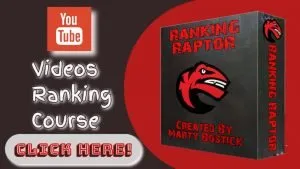So you want to dive into this mysterious ‘content marketing’ thing.
Maybe you’ve heard me rabbit on about how great it is – how it’s fun to write, fun to read, ethical, useful, great at building relationships and… you know, a multibillion dollar industry by now.
You probably know, maybe even cleverly deduced, that content marketing involves creating… uh, content. Something people like to read/watch/listen to/otherwise consume, that somehow drives your message.
But… how does it work?
How do you write an article that isn’t an ad, that somehow leads people to buy your stuff?
It’s easy enough to get started. Even if you hate writing, you could stick a camera or microphone in your face and just get going.
Will it work, though?
Or will people ignore you?
Maybe even take offence at you?
Or listen to what you have to say… but then not do anything more?
Content marketing is like another other aspect of your business:
Get it wrong and, at best, it’ll be a huge waste of your time, money and energy.
And there are two ways to mess up:
The content part…
And…
… well, the other part.
Luckily, I have a formula that’ll help. I was originally going to call this THE content marketing formula, but… eh. There’s more than one way to hook in a cat.
Step 1) Bait the hook
When I started out with content marketing – writing articles and whatnot – I wrote about whatever came to mind.
Mostly, it was informative – clearly up misconceptions around hypnosis, what it is (and isn’t) and what it can (and can’t) do.
That kept me busy for a long, long time.
A few problems though:
For one, my writing was pretty cringe-worthy back then. I guess that’s not a problem – if you get everything else right, you can probably write really strangely and still get it right.
That, I resolved with practice.
The second problem – people weren’t reading my articles. Traffic was practically zero.
Thirdly, those few who did read, didn’t act on it. They simply moved on to the next thing to take their attention.
It was frustrating to spend so much time for so little response. It was just as well I didn’t rely on my content marketing to pay the bills, otherwise I would have been freaking out.
It didn’t work because straight-up information isn’t content. Not really, which is why folks don’t read textbooks for fun.
People might be curious about what you offer…
But if you really want to grab their attention, you start with their pain.
Your offer must solve some problem in their life. That problem doesn’t have to be dramatic – if you sell, I don’t know, fancy dinner plates, the problem might be not impressing their friends as much as they’d like during dinner parties.
(If this wasn’t a real concern, no one would buy anything but the cheapest plates… )
People can’t ignore their own pain. Talk about it upfront and they’ll pay attention – especially if you let slip you have a solution.
Step 2) Paint the picture
Now they’re thinking about their problem.
It’s time to tell a story – preferably a personal one.
Why?
Because stories are the ultimate content.
They’re informative, entertaining and persuasive.
They’re relatable – when you talk about having the problem, your audience will know you get their struggles.
And they’re addictive. Why else do people spend billions on hearing stories through books, movies, games…
I doubt there’s a successful motivational speaker, coach or leader who doesn’t tell stories often.
But what is a story, really?
All stories – from the simplest anecdote to Lord of the Rings – feature emotional transformation. If none of the characters change how they feel, it doesn’t feel like a story. It comes across as more like a list of facts.
Your stories feature transformation too:
Someone (ideally you) struggled with the same problem your audience does.
You tried the thing you’re offering.
Then your life changed for the better.
It’s hardly Shakespeare but it still works. You hear this formula dozens of times a week but you don’t notice it until you stop and pay attention.
Here’s where it gets good:
When I started slipping in emotional transformations into my articles, things changed. People would reach out to me to say how much they liked my articles.
Traffic to my articles rose… and stayed there.
Even better, I started making sales.
If your content feels flat and uninspiring like mine used to, it’s probably missing this spark.
Step 3) Dive into the logic
There’s an argument that goes back and forth. Lots of folks believe they (and others) make decisions based on logic and reason.
Others argue back, saying people make decisions based on emotion and instinct.
They’re more accurate, but it’s not the full picture. Sure, we use emotions to guide our snap decisions… and even our important ones. But when we can, we use logic to check them.
For example, you might decide a house ‘feels right’… but before you buy it, you run it against your requirements. Does it have enough bedrooms or too many termites, that sort of thing. If it fails, it doesn’t matter how ‘right’ it feels – you turn it down. Logic overrides the emotion.
As it is with your marketing. You don’t just want to get their emotions on board – you want the logic to back your choice too.
Folks hate dry, boring facts… but you have enough emotional momentum from the first two steps to get away with it. If your audience have read this far, they’re likely to keep on reading. So this is your chance to add some crunch to your content.
Step 4) Make the call
By now, you’ve done nothing but entertain them. If they stopped reading, they’d still get a lot out of your content.
And that’s okay – the ones who are still reading might share your content, fire up your other content and, yep, maybe even make a purchase.
So this is your chance to ask for it.
Remind them of what they’ll get by using your solution.
Tell them what the next step is – like “call me at this number” or “follow this link”.
Then make it easy for them to do exactly that.






